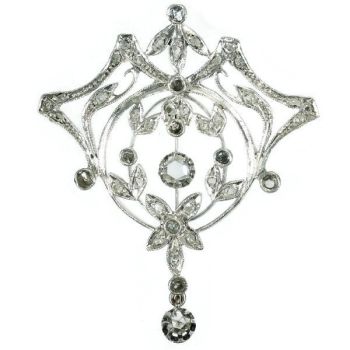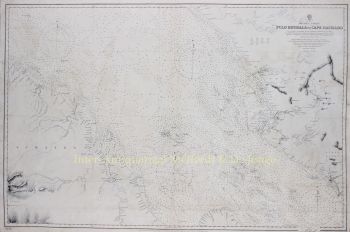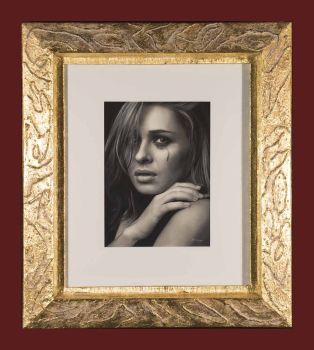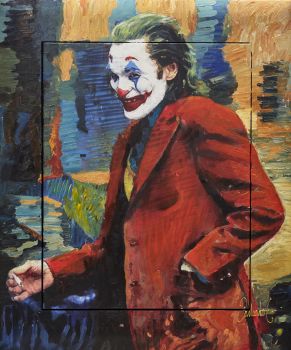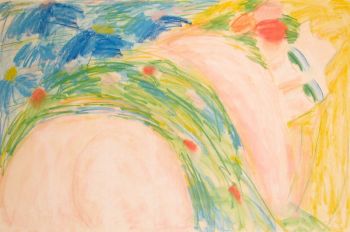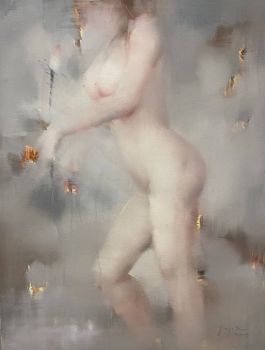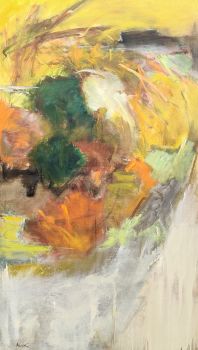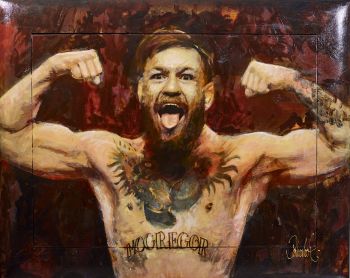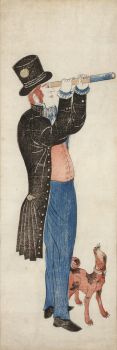A portrait of Sultan Hamengkubuwana VIII of Yogyakarta (1880-1939) 1925 - 1928
Artista Desconocido
Óleo sobre lienzo original
103 ⨯ 86 cm
Precio a consultar
Zebregs & Röell - Fine Art - Antiques
- Sobre la obra de arteA portrait of Sultan Hamengkubuwana VIII of Yogyakarta (1880-1939)
Java, Yogyakarta, circa 1925-1928
Oil on canvas, H. 103.5 x W. 86 cm
Provenance:
Private collection, Indonesia
Sultan Hamengkubuwana VIII (March 3, 1880 – October 22, 1939), born as Gusti Raden Mas Sujadi) was a ruler of the Yogyakarta Sultanate. He was inaugurated as the Sultanon February 8, 1921 and ruled until his death in 1939. During Hamengkubuwana VIII's reign, the Yogyakarta Sultanate used substantial funds for various activities, including financing the sultanate's schools. Many of Hamengkubuwana VIII's sons were well-educated, with many studying in the Netherlands. Among them was Gusti Raden Mas Dorojatun, who would later ascend the throne as Hamengkubuwana IX, who attended Leiden University.
During his reign, he oversaw the extensive renovation of the Yogyakarta Palace complex buildings before in bad shape. Notable among these is the Bangsal Pagelaran located at the very front (directly south of the northern Alun-alun of Yogyakarta). Other renovated buildings include the tratag Siti Hinggil, the Donopratopo Gate, and the Great Mosque.
The sultan died on October 22, 1939, presumably on a train in the Wates area, Kulon Progo, while returning from Batavia (Jakarta) to pick up Gusti Raden Mas Dorojatun who just returned from the Netherlands. Other sources state that he passed away at the Onder de Bogen hospital (now Panti Rapih Hospital) after falling ill on the train in the Kroya area. Gusti Raden Mas Dorojatun, who had not yet finished his studies, was suddenly called home. In Batavia, the Sultan handed over the Kyai Ageng Joko Piturun keris to Gusti Raden Mas Dorojatun as a symbol of royal succession, indicating that Gusti Raden Mas Dorojatun would be the next Sultan. - Sobre el artista
Puede suceder que un artista o creador sea desconocido.
Algunas obras no deben determinarse por quién está hecho o por (un grupo de) artesanos. Algunos ejemplos son estatuas de la Antigüedad, muebles, espejos o firmas que no son claras o legibles, pero también algunas obras no están firmadas en absoluto.
También puedes encontrar la siguiente descripción:
•"Atribuido a …." En su opinión, probablemente una obra del artista, al menos en parte.
•“Estudio de….” o “Taller de” En su opinión, una obra ejecutada en el estudio o taller del artista, posiblemente bajo su supervisión
•“Círculo de…” En su opinión, una obra del período del artista que muestra su influencia, estrechamente asociado con el artista pero no necesariamente su alumno.
•"Estilo de …." o “Seguidor de…”. En su opinión, una obra ejecutada al estilo del artista pero no necesariamente por un alumno; puede ser contemporáneo o casi contemporáneo
•"Manera de …." En su opinión una obra al estilo del artista pero de fecha posterior
•"Después …." En su opinión, una copia (de cualquier fecha) de una obra del artista
•“Firmado…”, “Fechado…” o “Inscrito” En su opinión, la obra ha sido firmada/fechada/inscrita por el artista. La adición de un signo de interrogación indica un elemento de duda.
•“Con firma…”, “Con fecha…”, “Con inscripción…” o “Lleva firma/fecha/inscripción” en su opinión la firma/fecha/inscripción ha sido añadida por alguien que no es el artista
¿Está interesado en comprar esta obra de arte?
Artwork details
Related artworks
- 1 - 4 / 12
Artista Sconosciuto
A Chinese porcelain blue and white 'Mantou Xin' bowl, Kangxi period (1661-1722)1700 - 1720
Prezzo su richiestaMenken Works of Art
Artista Sconosciuto
Chinese carnelian agate vase or brush washer, 18th/19th century, Qing dynasty1720 - 1820
Prezzo su richiestaMenken Works of Art
Artista Sconosciuto
A blue and white Romance of the Three Kingdoms charger, Kangxi period (1661-1722)1661 - 1722
Prezzo su richiestaMenken Works of Art
HUGO VILFRED VON PEDERSEN
Gadesanger fra Singapore (Musician from Singapore)1870 - 1959
Prezzo su richiestaZebregs & Röell - Fine Art - Antiques
Artista Sconosciuto
A Japanese bronze Hu flower vase, Edo / Meiji, 19th century19th century
Prezzo su richiestaMenken Works of Art
1 - 4 / 16- 1 - 4 / 24
Anthonie Pieter Schotel
BOTTERS OP DE ZUIDERZEE MET DOOR HET WATER WEERKAATST ZONLICHT1920 - 1950
Prezzo su richiestaGalerie Het Noorderlicht
Isaac Israels
"Een essayeuse bij het modehuis Hirsch"1865 - 1934
Prezzo su richiestaStudio 2000 Art Gallery
1 - 4 / 24Artista Sconosciuto
A superb Indonesian royal gem-set gold overlaid silver betel box19th century
Prezzo su richiestaZebregs & Röell - Fine Art - Antiques
Artista Sconosciuto
Olandesi in miniatura (Netsuke)1700 - 1900
Prezzo su richiestaZebregs & Röell - Fine Art - Antiques
Artista Sconosciuto
UN NETSUKE IN AVORIO DI UN OLANDESE CHE GIOCA CON UN RAGAZZINO18th century
Prezzo su richiestaZebregs & Röell - Fine Art - Antiques
Wolfgang Hugo Rheinhold
“Eritis sicut Deus”1900 - 1950
Prezzo su richiestaZebregs & Röell - Fine Art - Antiques
1 - 4 / 12








